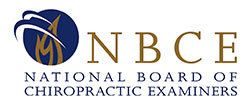Part III Test Plan
(Without Diagnostic Imaging Interpretation/DXI)
Case History (11%)
Competency description: The successful examinee can identify factors necessary for obtaining a complete case history, and apply this knowledge to a clinical picture.
Examples include:
- Chief complaint
- Present illness
- Past history
- Family history
- Personal and social history
- Review of systems
Physical Examination (9%)
Competency description: The successful examinee can select appropriate physical examination procedures and apply knowledge of these procedures to a clinical picture.
Examples include:
- General survey
- Head and neck examination
- Thorax and lung examination
- Cardiovascular examination
- Breast and axilla examination
- Abdominal examination
- Urogenital examination
- Rectal examination
Neuromusculoskeletal Examination (11%)
Competency description: The successful examinee can select appropriate neuromusculoskeletal examination procedures and apply knowledge of these procedures to a clinical picture.
Examples include:
- Posture and gait analysis
- Standard spinal and extremity orthopedic procedures
- Standard neurological testing procedures
- Peripheral vascular examination procedures
Diagnostic Imaging (11%)
Competency description: The successful examinee demonstrates knowledge of all areas of diagnostic imaging pertinent to chiropractic practice (including radiographs, computerized tomography, magnetic resonance imaging, diagnostic ultrasound, and nuclear bone scans).
Examples include:
- Indications and contraindications for diagnostic imaging procedures
- Patient protection and positioning
- Normal anatomy
- Description and interpretation of images
Clinical Laboratory and Special Studies (7%)
Competency description: The successful examinee will demonstrate understanding of the rationale for ordering specific clinical laboratory tests and special studies and to demonstrate ability to interpret the results of these tests or studies.
Examples include:
- Urinalysis
- Hematology
- Serology
- Blood chemistries
- Stool analysis
- Joint fluid analysis
- Electrophysiologic recordings (EEG, ECG, EMG, and NCV)
Diagnosis or Clinical Impression (14%)
Competency description: Based on information gathered in the various areas of examination, the successful examinee can identify the pathophysiologic mechanisms responsible for a patient’s complaints.
Sources of information include:
- Patient history
- Physical and neuromusculoskeletal examinations
- Diagnostic imaging
- Clinical laboratory and special studies
Chiropractic Techniques (14%)
Competency description: The successful examinee will demonstrate knowledge of all areas of chiropractic technique.
Examples include:
- Indications and contraindications for chiropractic care
- Spinal adjustive techniques
- Extremity adjustive techniques
- Skeletal biomechanics
Supportive Interventions (8%)
Competency description: The successful examinee demonstrates knowledge of techniques and procedures that are supportive of or adjunctive to the chiropractic adjustment.
Examples include:
- Physiotherapy modalities
- Nutrition and diet
- Corrective exercises and rehabilitation
- Protective body mechanics and ergonomics
- Patient education and self-care
- Wellness and lifestyle counseling
Case Management (15%)
Competency description: The successful examinee selects an approach to the management or disposition of a case that is consistent with the clinical impression or diagnosis.
Examples include:
- Formulation of a treatment plan and prognosis
- Appropriate procedures for case follow-up and review
- Patient referral and/or co-management
- Clinical documentation and informed consent
Apply→Get Approved→Pay→Schedule
Your Application Process Starts Here
Apply
